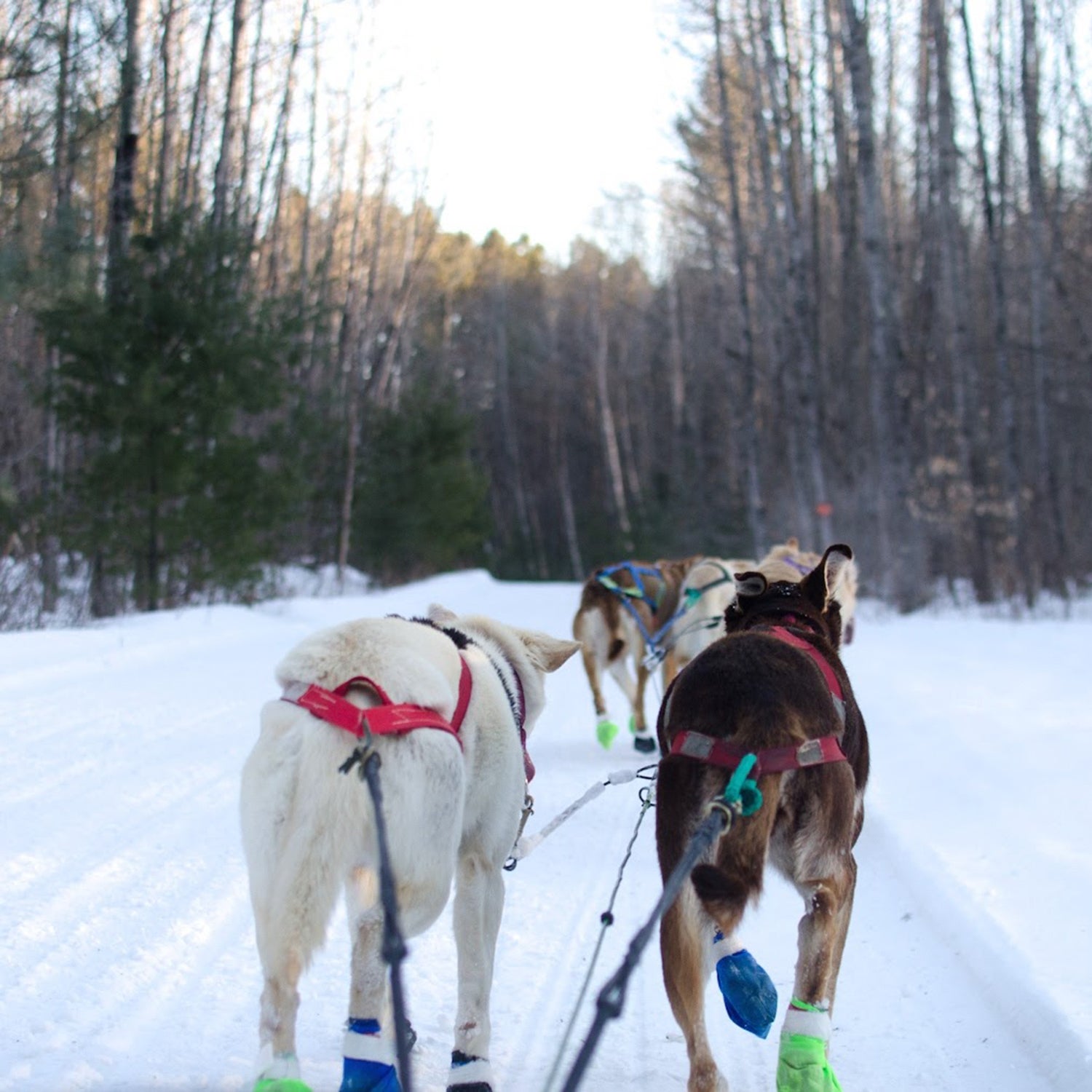One of the best things about raising sled dogs is being forced to do manual labor outside, every day of the year. It doesn’t matter if there’s a whiteout blizzard, if the car won’t start, if the pups are curled in their houses and don’t even stick their heads out when I shuffle by. The work is always there. Baiting warm broth so the dogs will drink their water before it freezes, chopping venison into chunks with a hatchet, scooping poop, hauling around a bale of straw for fresh, fluffy bedding. And then, of course, there’s the running: slipping booties over icy paws, fitting muscular bodies into harnesses, clipping each dog to the gangline, holding tight to the sled for two or four or eight hours. “What’s your workout plan?” a man asked me at a reading this summer. My workout plan? It’s keeping 21 dogs in top shape.
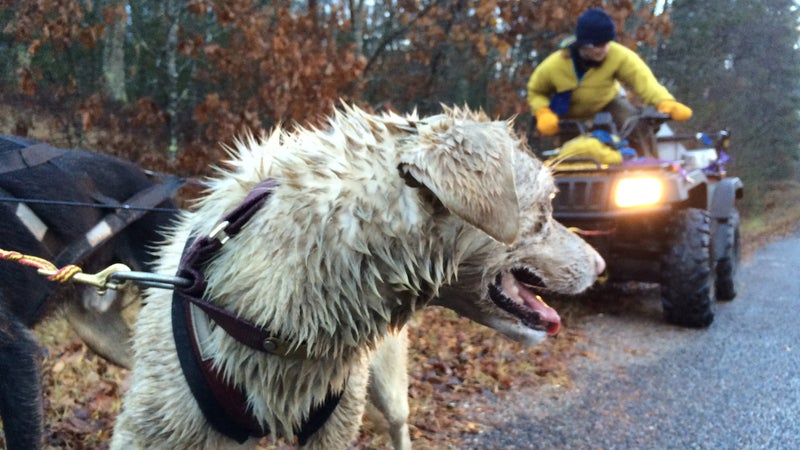
Mushing is cyclical, which means that late fall—after the long siesta of summer, before the sharp intensity of winter—feels to me like the peak of the year, chore-wise. My husband brought most of our dogs up to Alaska from May until August, where they stayed active (and cool) by pulling tourists around a glacier, while I stayed home in Wisconsin and raised the puppies. We start our fall training runs at an easy ten miles before gradually moving up to the more typical 30- or 40-mile afternoons. The woods are muddy, rich with the distracting scents of animals and hunters, and the dryland cart jolts and rattles over every rock. It’s an exciting time, full of anticipation, but it’s also the time when I worry most about mishaps: you can never predict how deep that puddle’s going to be, and, crash-wise, dirt and rock aren’t a fraction as forgiving as snow.
When I’m with the dogs, I never want to be anywhere else. I can camp with them for days straight without once longing for the indoors. But in late fall, when I’m curled on the couch, I’m not always keen to get up, either. The whole system reminds me of that Zen saying: “Before enlightenment, chop wood, carry water. After enlightenment, chop wood, carry water.”
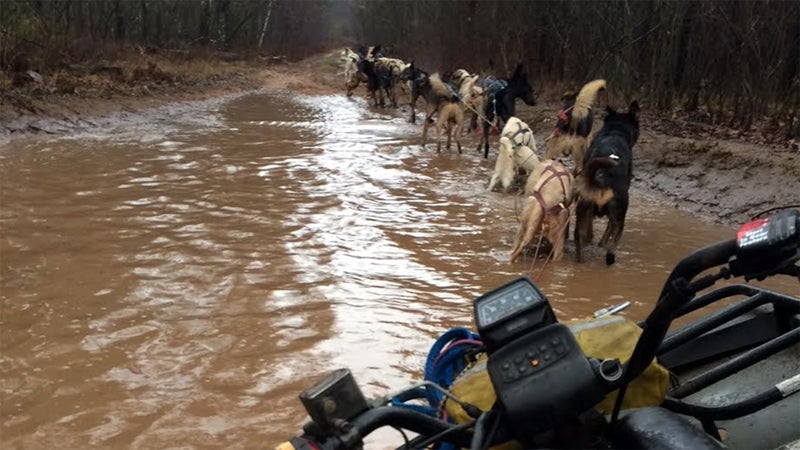
Which I take to mean, probably wrongly, that the most rewarding parts of life are formed through the repetition of simple labors. Chop meat for the dogs, carry water for the dogs. Chop more meat. Carry more water.
And then it snows.
It shocks me every single year. That white December morning, dogs already prancing in the fluff. It’s a rush to lace up my wool boots, haul my favorite sled—the ultralight one that lets me carve turns like a slalom skier—from the barn loft, harness a half-dozen dogs, hook up, and pull the quick release that holds us to an anchoring fence post. It’s so sudden that it takes a moment for the team to realize we’re free, and in that split second they leap forward, the heady rush of paws churning snow, the gulps of air as their muscles turn. The sled glides with a whisper. It’s like being at your favorite childhood sledding hill, only this time six of your best friends are surging ahead of you, tongues flapping, collars jingling. If Refried comes along, a seven-year-old powerhouse and aunt to the summer’s pups, then there’s also that chipper yip-yip-yip she makes when she runs, even when all the other dogs are silent, an incessant and hilarious cheer that only gets louder on the hardest parts of the trail.
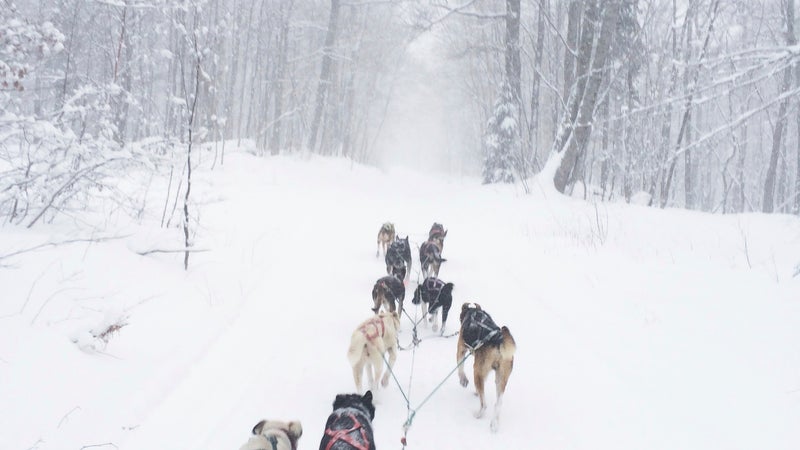
It’s play. It’s absolutely play. I can never quite forget that this sport of mine, this lifestyle, is fundamentally absurd. Dogs pull me through the snow for hundreds of miles. Of all the things humans have invented, this seems among the most strange and pure and beautiful. The feeling is familiar but always fresh: the shifting of runners under my feet, the burn of kicked-up snow clumps against my cheeks, the skid of a good sled around a tight corner. A dance on the surface of uncontrollable power. Every dog’s gait, movement, slightly different. I could pick out each one by its shadow.
For the past few weeks, I’ve been bringing along a bag of straw so the dogs can bed down and practice napping for a few hours before turning toward home. It’s much easier to teach them to run than to rest, though the skills are equally important for long races. When we stop to rest, the young dogs toss their straw in the air, somersault, come up with grass all over their faces, sneeze. The old dogs curl into balls and sigh out their tensions. Like new parents, they’ve learned to take their sleep where they can. Depending on where we are in this northwoods town, I might run into the Schoolhouse Bar for a hot chocolate as the regulars peer out the window at the special setup we’ve made for the team between two trees out back. Or, if we’re in the woods, I’ll roll out a sleeping bag and lie down, watching the sky through the steam of husky breath.
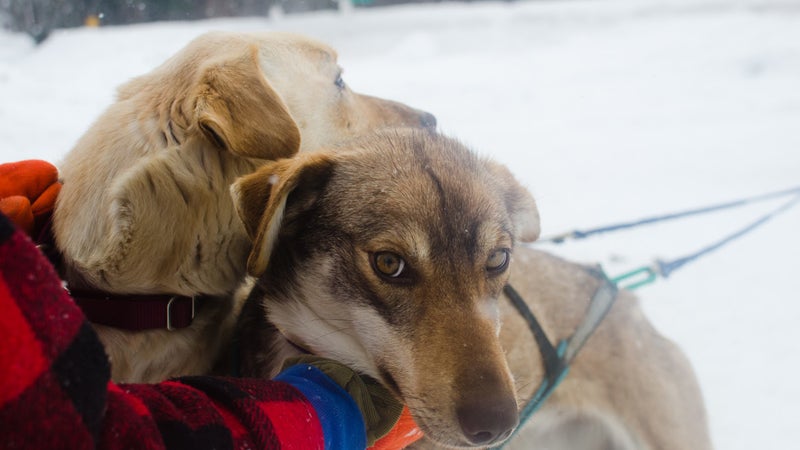
Lately, though, my favorite thing to do with the dogs is just explore: take a small enough team that I can maintain some muscle power over the sled, scope out a map, and break new trail. What happens if we turn by the bank of the river? If we cross the thick ice behind the beaver dam? If we weave between the naked birch, if we cut across that open field? We can run our favorite trails by memory, cruise control, the dogs and I each in our own minds. But bushwhacking with a dog team is full-on collaboration. We scare up grouse, shriek down gullies, the dogs galloping forward as I wrestle the sled over logs and boulders. It’s simple but never easy, each moment a different challenge. And it’s there, in the immediacy of those moments, that I’m best able to relax.
Blair Braverman () is the author of . This is her second of four columns about raising a sled dog team.


